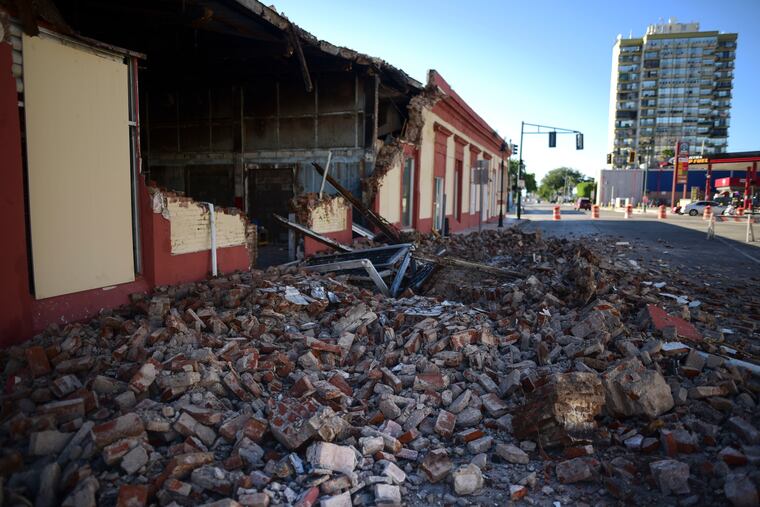Puerto Rico earthquake stirs worries for Philly relatives: ‘I feel helpless’
Philadelphia Councilmember Maria Quiñones-Sánchez, who was born in Puerto Rico, is joining with others starting to plan relief efforts. “So many infrastructure problems still remain from past disasters,” she said

The earthquake that hit Puerto Rico before dawn Tuesday left a crack in the wall of the house where Camden City Council Member Felisha Reyes-Morton’s mother has lived for years. Elsewhere in Santa Isabel, on the island’s southern coast, other family members are without power, relying on spotty WiFi connections for information on social media.
“People are confused,” said Reyes-Morton, who has aunts, cousins, grandparents, and other relatives living within 25 miles of where the 6.4 magnitude quake hit. “It’s hard for the government to communicate at a time like this, with no electricity and damaged roads. There is fear and a lot of uncertainty.”
As natural disasters have pummeled Puerto Rico, many have fled the island for Philadelphia, drawn by its relatively low cost of living and thriving Puerto Rican community. There were about 134,000 Puerto Ricans in Philadelphia as of 2017, nearly 50% more than two decades earlier. An additional 23,000 live in Camden, about a third of the city’s population.
» READ MORE: 6.4 quake strikes Puerto Rico amid heavy seismic activity
Gladys Carrión, a middle school teacher at Julia de Burgos School in Philadelphia’s Fairhill section, has two adult sons living in Yabucoa, on the island’s east coast. When she spoke with them a few hours after the quake on Tuesday, both said they were fine and urged her to keep calm. She’s still worried after aftershocks and other ripple effects.
“I feel helpless with this situation, after all we’ve been through,” she said.
Philadelphia City Councilmember Maria Quiñones-Sánchez, who was born in Puerto Rico, had been planning a trip there this week to visit family. Her relatives are safe, she said. Meanwhile, she and others are starting to plan how to help with relief efforts. After Hurricane Maria in 2017, the local Latin American community joined with other groups like churches and synagogues to raise hundreds of thousands of dollars, she said.
“So many infrastructure problems still remain from past disasters,” she said. “The electric grid is still very fragile. A lot of things have been normalized; it’s not unusual to lose power or water. People are more nonchalant about it. That becomes oppressive day after day. It’s very sad.”
Vanessa Colón Almenas, a reporter for Puerto Rico’s Centro de Periodismo Investigativo (Center for Investigative Journalism), said that island residents were waiting in long lines for gas, as they did after Hurricanes Irma and Maria, and that the ground had been shaking off and on for the last week and a half, leading many to fear that more quakes could be ahead.
Striking just before 4:30 a.m. Tuesday, the quake was reported just south of Guayanilla, in the southern part of the island. It was followed by strong aftershocks, and seismologists say it’s impossible to predict if the shaking will stop or become stronger.
Eight people were injured in Ponce, Mayor Mayita Meléndez told WAPA television, and police confirmed that 73-year-old Nelson Martínez Guillén had died in the quake.
Power went out on the island as plants shut down to protect themselves, with two suffering minor damage. Water systems were also shut down, buildings collapsed, and major highways caved in.
Gov. Wanda Vázquez Garced issued an executive order Tuesday to activate the National Guard, stating that “the earthquake caused even more significant damage to critical infrastructure, life and property, including roads, bridges, schools, homes and other related damages.”
This story contains information from the Associated Press.